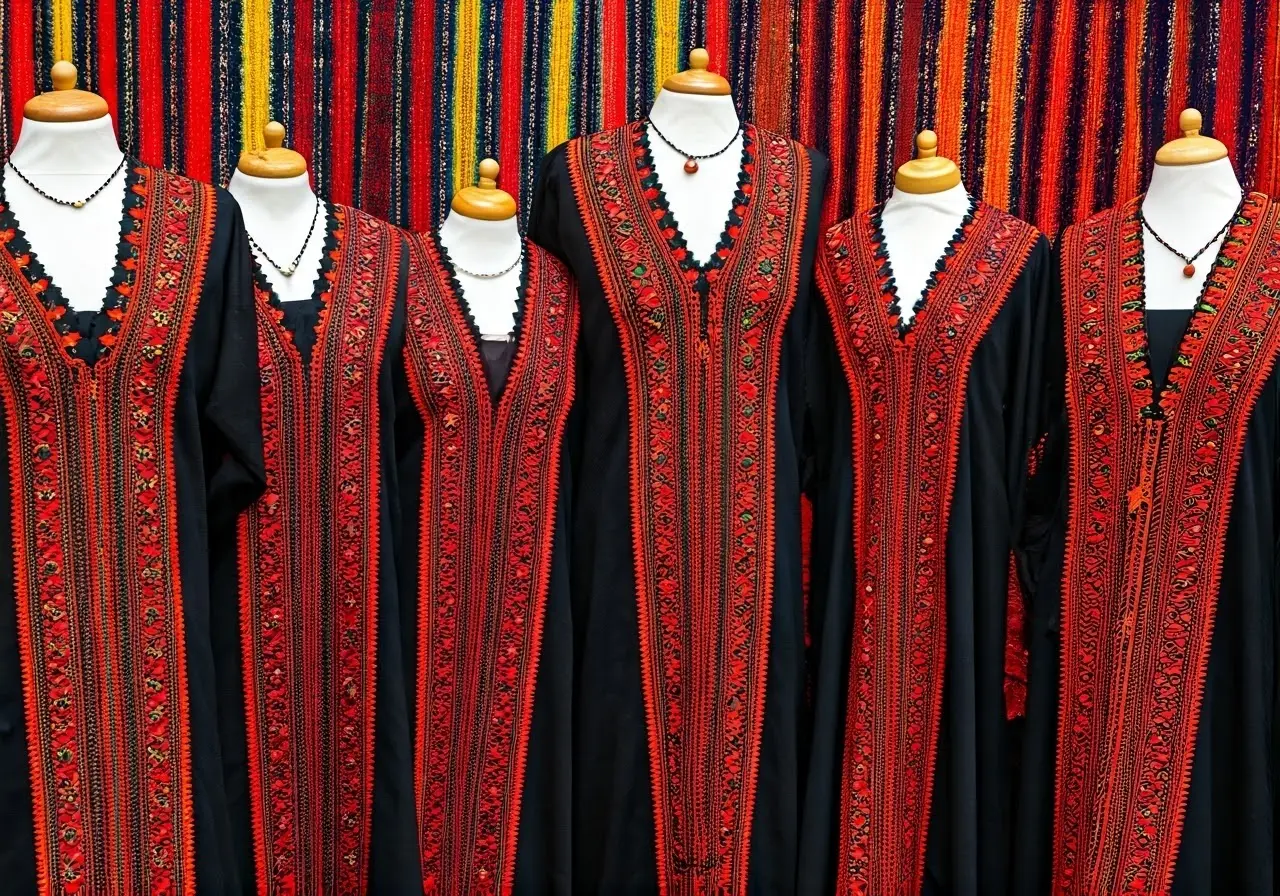In recent years, modest fashion has emerged as a powerful movement, embracing diverse styles and cultural influences. Palestinian crafts, with their rich history and artistic vibrancy, have taken center stage in this fashion evolution. From intricate embroidery to traditional weaving, these crafts are not just preserving cultural heritage but are also redefining modest fashion in exciting ways. Let’s explore how Palestinian artisans are contributing to this dynamic industry.
The Historical Significance of Palestinian Crafts
Palestinian crafts boast a deep historical significance, with roots that trace back centuries. Traditional techniques like embroidery, known as ‘tatreez,’ have been passed down through generations, symbolizing cultural stories and identities. These crafts offer more than aesthetic appeal; they serve as a vital connection to the Palestinian heritage. The Malak Thob, celebrated for its rich couching embroidery, is a perfect embodiment of this cultural legacy, illustrating the vibrant narratives woven into every stitch.
The patterns and motifs found in Palestinian embroidery are deeply intertwined with the region’s history and its people. From the affluent households of Bethlehem to the humble villages of the West Bank, each piece tells a distinct story, drawing on influences that span geographical locations and historical epochs. The artistry in Palestinian crafts is not only identified by its complexity but also by its capacity to convey detailed and symbolic cultural messages. The colorful thobs, embellished with intricate designs, represent the diverse layers of Palestinian identity, celebrating a shared heritage while also reflecting individual creativity. As these crafts transcend borders, they continue to foster a global appreciation for the richness of Palestinian culture.
The Role of Palestinian Embroidery in Modest Fashion
Palestinian embroidery has found a new realm of expression within modest fashion, offering intricate patterns and vibrant colors that resonate with consumers seeking both style and cultural depth. The detailed craftsmanship of pieces incorporating ‘tatreez’ adds a unique flair to garments, making them coveted items in the modest fashion market. Each piece not only meets the aesthetic desires of modern consumers but also ties them to a historical tradition that is both meaningful and expressive.
The resurgence of Palestinian embroidery in global fashion circles highlights the timeless appeal of designs that merge cultural heritage with contemporary style. Designers from around the world are increasingly incorporating these authentic elements into modern silhouettes, creating pieces that speak to a universal sense of elegance. Whether it’s the bold patterns adorning abayas or the subtle, intricate details on kaftans, Palestinian embroidery elevates modest fashion by adding layers of history and artistry. This blending of old techniques with new demands not only provides a platform for Palestinian artisans to showcase their talents but also helps consumers connect with the stories embedded in each thread, fostering a deeper understanding and appreciation for cultural diversity in fashion.
Sustainability and Ethical Practices in Craftsmanship
The resurgence of Palestinian crafts in fashion aligns with a growing global emphasis on sustainability and ethical practices. Artisans often employ locally-sourced materials and traditional techniques, minimizing environmental impact while promoting fair trade and community development, thus appealing to a conscientious consumer base. By embracing these sustainable methods, artisans not only preserve their cultural heritage but also pave the way for more environmentally friendly practices in the fashion industry.
Palestinian crafts emphasize a slow and deliberate approach to fashion, celebrating the value of hand-made over mass production. This movement towards sustainability is further reinforced by the global shift towards mindful consumption, where quality and durability are prioritized over quantity and fleeting trends. Palestinian artisans are at the forefront of this change, demonstrating that fashion can be both beautiful and sustainable. Their emphasis on ethical production ensures fair wages and safe working conditions for those involved in the crafting process, creating a positive impact on local communities and setting a benchmark for others in the fashion industry.
Empowerment Through Artisan Craft
For many Palestinian women, engaging in traditional crafts is more than a livelihood; it is a form of empowerment. Craftsmanship provides economic opportunities and allows artisans to assert their identity and creativity in a powerful, global fashion dialogue. This empowerment is reflected in the pride and passion woven into each piece. At Palestinian Elegance, efforts are made to spotlight these artisans, giving them a stage to showcase their incredible skills and share their stories with the world.
The creation of beautiful, meaningful garments empowers Palestinian women to take control of their narratives and contribute to their communities in significant ways. By transforming traditional crafts into contemporary fashion statements, these artisans not only preserve their cultural heritage but also create new opportunities for younger generations, inspiring them to maintain and evolve these vital traditions. Through their intricate work, Palestinian artisans challenge preconceived notions about fashion, sustainability, and empowerment, offering a fresh perspective that continues to captivate and inspire fashion enthusiasts worldwide.
Embracing Heritage Through Fashion
Palestinian crafts have become an integral part of the global modest fashion landscape, weaving tradition with modernity in a truly unique tapestry. By celebrating and preserving their rich cultural identity, Palestinian artisans are not only redefining fashion but also inspiring a movement of empowerment and creativity. As fashion continues to evolve, the contributions of these craftspeople serve as a reminder of the beauty that lies in diversity and heritage.




